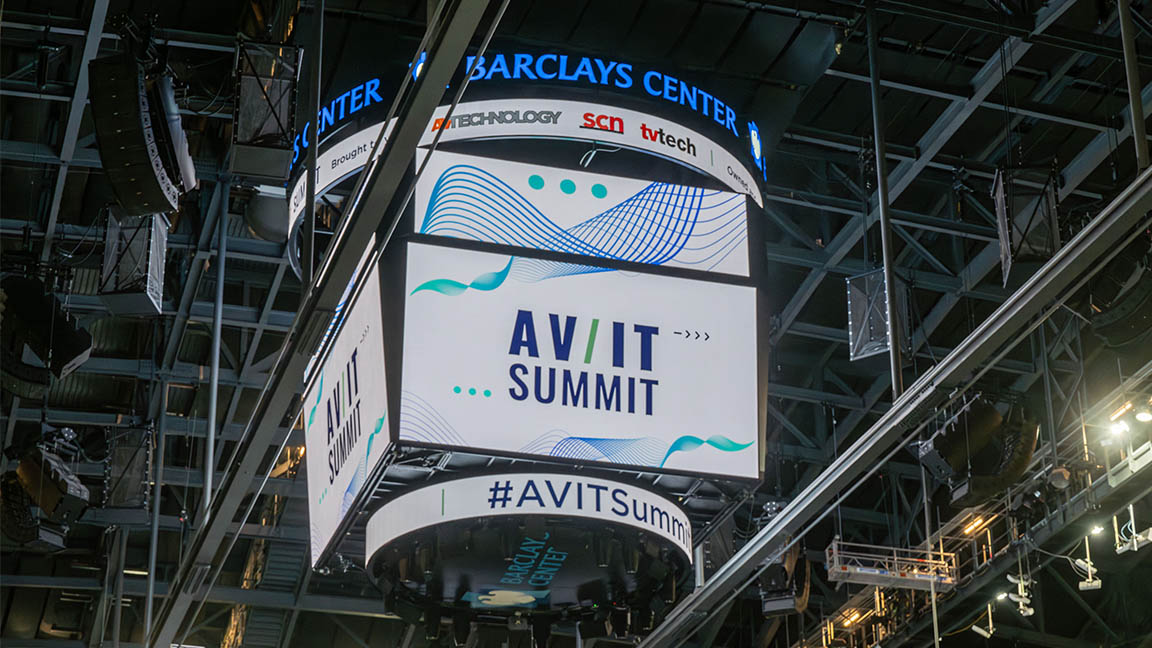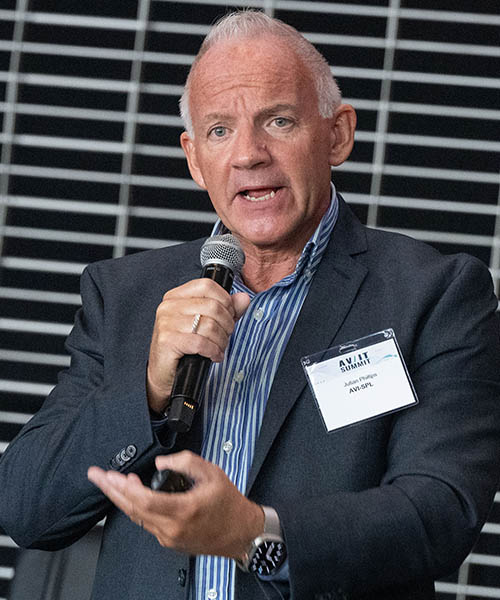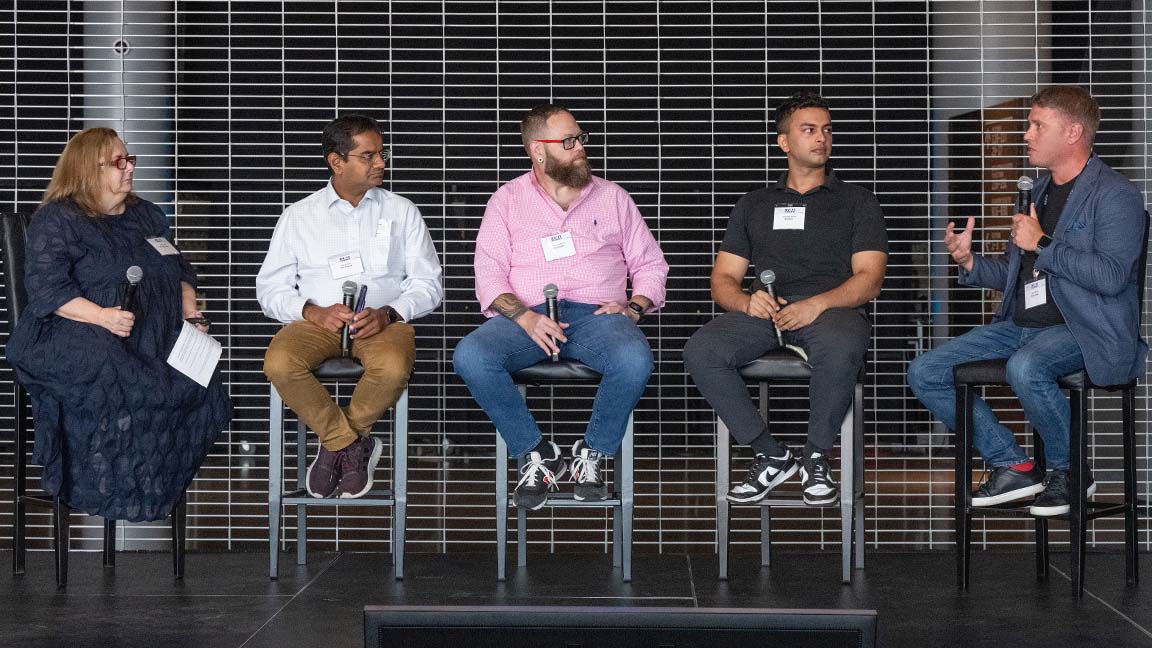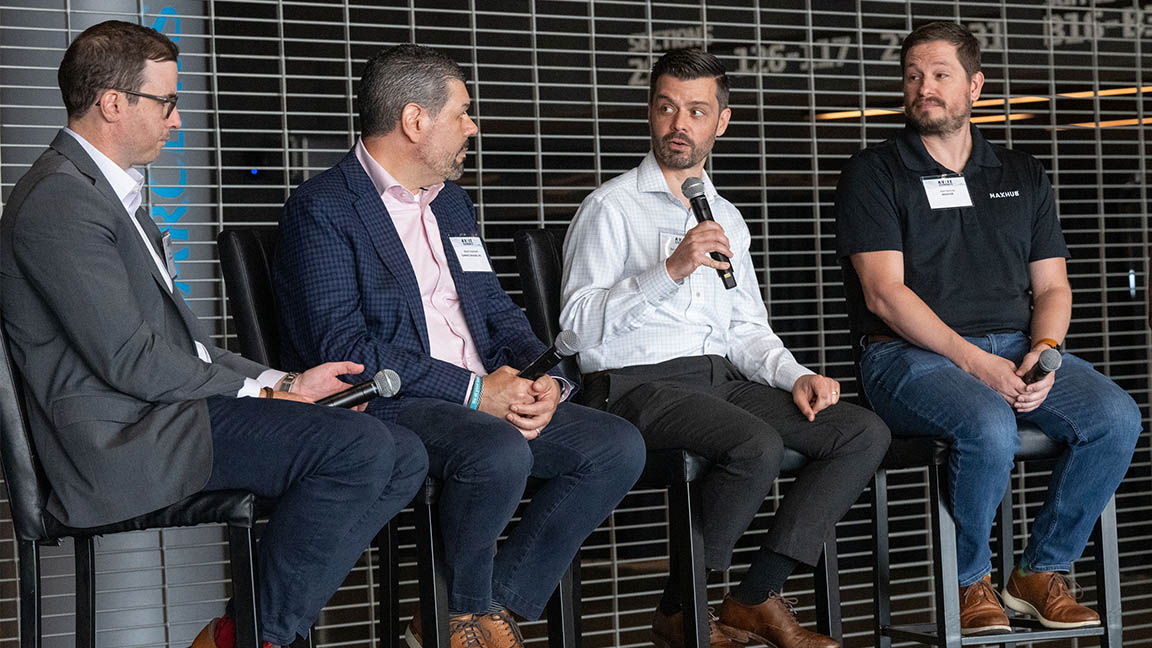
The 2024 AV/IT Summit, held Aug. 1 at Barclays Center in Brooklyn, NY, offered an exciting look into the future of technology integration. AV Technology’s Cindy Davis, TV Tech's Tom Butts, and SCN’s Mark J. Pescatore welcomed industry leaders to share groundbreaking insights and innovative strategies, from AI-driven solutions that streamline operations to reimagining workplace designs. The event highlighted a collective shift toward a more interconnected, data-driven future.

Keynote speaker Julian Phillips kicked off the program by linking AI's transformative power to past technological revolutions, such as the steam engine and electricity, and encouraging attendees to consider reorganizing industries and processes to realize AI's benefits. He discussed Amara's Law, which suggests that people tend to overestimate the impact of new technology in the short term but underestimate it in the long term. Phillips firmly believes that this is happening with AI.
He offered a great example by sharing a promotional video of the Amalfi Coast that he made using an AI platform. He explained that the video was quickly created with just a few simple prompts. Phillips also challenged attendees to participate in what he believes is a new and exciting era in our lives. Throughout the day, Phillips was constantly approached by attendees, showing that many were considering his challenge.
Modern Office Adjustments
Businesses are prioritizing the creation of integrated spaces that can support both in-office and remote workers. During the "Transforming the Workplace, Engaging Teams, and Rethinking Process" session, panelists discussed the constantly evolving needs of the modern workplace.
[High Marks for FAU's New Studio]
For example, Kevin Laugherty with CVS Health stressed the importance of creating an environment where everything works together seamlessly rather than having a room filled with isolated components. From Amazon's perspective, Harmeet Bhatia echoed this sentiment, describing a holistic approach that allows the company to create adaptable work environments that cater to various needs.
With office occupancy rates fluctuating, companies are reconsidering how they use their spaces and are prioritizing those that offer flexibility and adaptability. Matt Morgan from Ross Video, who has worked with companies like Amazon on space development, emphasized the importance of robust communication systems, especially in workplaces with a mix of remote and in-person work.
The panel also discussed the importance of achieving equity, resulting in a focus on creating flexible spaces that accommodate various working styles. Red Thread's Ashish Maru said employees need to be able to express themselves through communication without being hindered by technology. "Having that engaged infrastructure is important," he noted.

Higher Education Transformation
Erin Maher-Moran, IT manager of classroom technology at Johns Hopkins University, convened AV and IT experts in higher education to explore "AV/IT Technology's Roles in Modern Higher Ed Classrooms and Campus." The panel was presented by the Higher Education Technology Managers Alliance (HETMA).
Educators are shifting away from traditional lecture-based learning and are utilizing technology to provide a more interactive and experiential approach to education. This includes bringing in guest speakers through platforms like Zoom and sharing streaming content directly in the classroom. C. Ann Kelly from Yale University said it's important to evaulate the interests of different learners and create spaces to support their learning, along with the infrastructure to facilitate communication among students.
The panel emphasized the importance of making schools more accessible, not only to comply with ADA regulations but also to enhance the learning experience for all students, including those with disabilities or language barriers. ENCO's Gilbert Felix stressed the essential need for all students to be able to follow along in the classroom and how technology can make this possible. Closed captioning, live translation, and various AI technologies were discussed as ways to create a more inclusive learning environment. Pace University's George Chacko advised providing accessibility discreetly, so students don't feel singled out.
[The Integration Guide to Education 2024]
Rich Miller from Pace University also stressed the importance of introducing technology that faculty members feel comfortable using. While technology enthusiasts may be excited about new advancements, it's vital to avoid putting faculty members in a position where they feel lost.
Collaboration Requirements
Is it possible for AV and IT experts to collaborate effectively despite their distinct areas of expertise? This topic was explored during an afternoon discussion, "The AV/IT Handshake: How to Facilitate Technology and Teams." Panelists concluded that collaboration is indeed possible—with a little bit of understanding.
According to Steve Greenblatt from Control Concepts, it's important to consider critical concerns, such as uptime and security, when approaching IT collaboration as an AV professional. Tyler Kulp from AVI Systems emphasized that prioritizing network resources is crucial for developing effective customer solutions, advocating for a strategic approach to operations. "Bandwidth, security, these kinds of things need to be vetted out with the appropriate parties in the beginning, so they don't escalate," he said.

IT might only comprehend AV's actions from a high-level perspective, but Alan Nicholls from MAXHUB said it's important to acknowledge that they may not know the right questions to ask (or vice versa) to achieve your collective goals. "It's really one of those things where I always recommend having a project manager, somebody to bridge that gap, somebody who knows both sides," he advised.
[Cybersecurity and Pro AV]
Pescatore, who moderated the panel, raised an intriguing question about who needs the other more. Verrex's Ben Dandola-Grubb said the pandemic altered his initial perspective. "I'm unaware of an organization today that doesn't leverage some semblance of unified conferencing, period," he explained. "So, to be Darwinian for a moment, we have to coexist. I don't think one needs more than the other."







